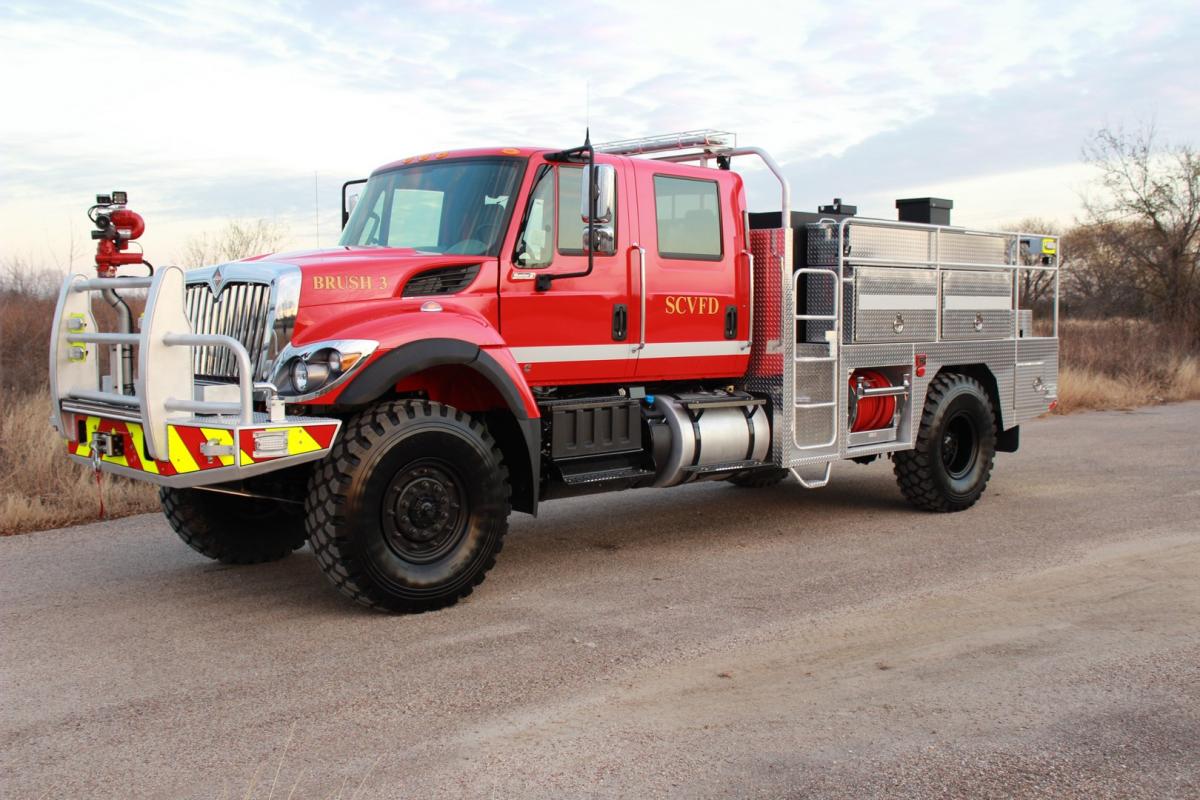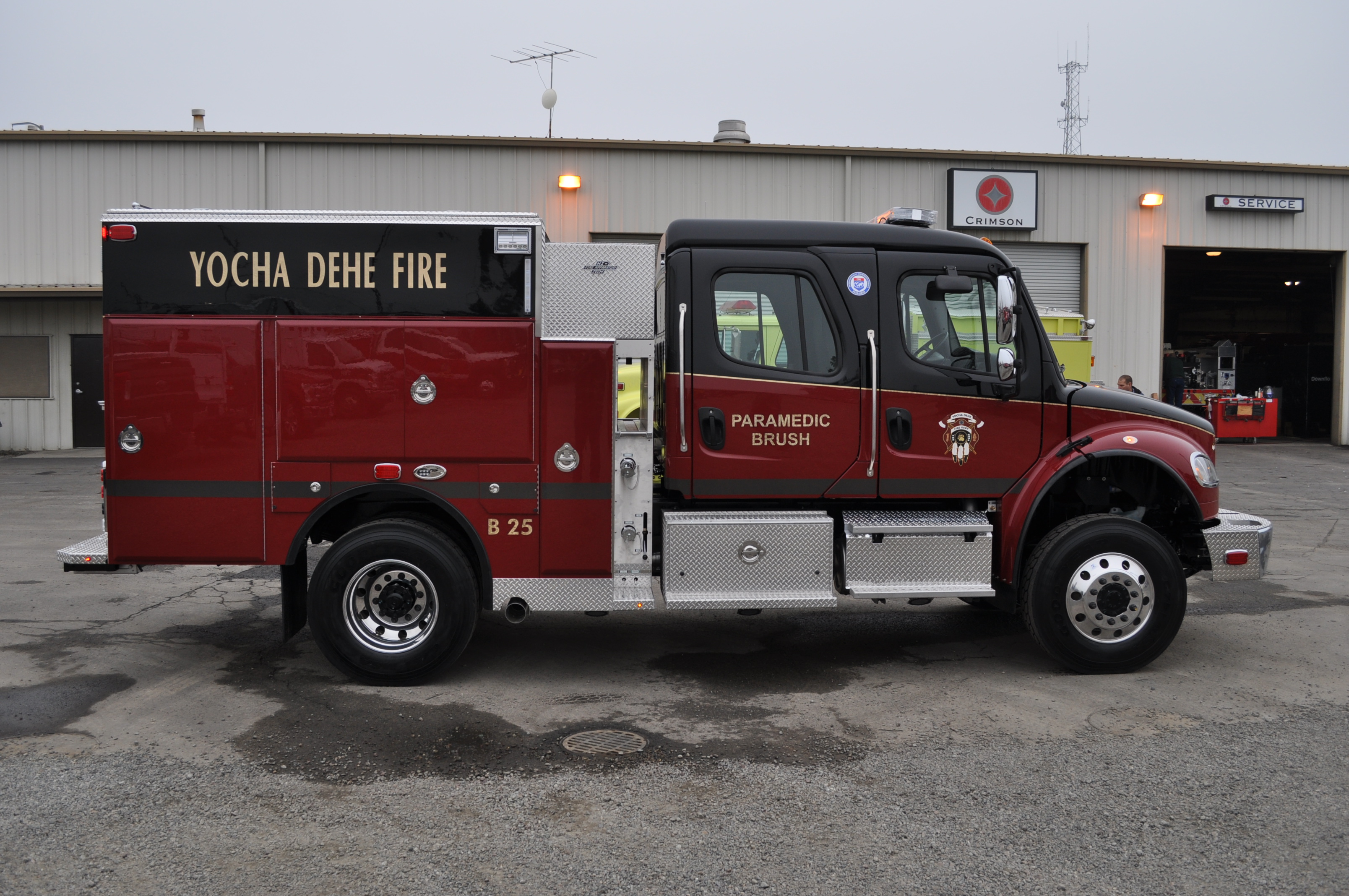

Type 5s are normally used as an initial attack engine atop a medium duty chassis. The typical GVWR is at least 26,000 pounds (12,000 kg). They are required to carry a minimum of 750 US gallons (2,800 L 620 imp gal) of water, but only pump 50 US gallons per minute (3.2 litres per second 42 imperial gallons per minute) at a pressure of 100 pounds per square inch (690 kPa). The Type 4 engine trades a smaller pump and less hose for a 50% larger tank. The Type 3 is the most popular engine in California due to the easy road access of most fires. They have a typical GVWR of 26,000 pounds (12,000 kg).

Type 3s are required to have a minimum of 500 US gallons (1,900 L 420 imp gal) of water, and be able to pump 150 US gallons per minute (9.5 litres per second 120 imperial gallons per minute) at a pressure of 250 pounds per square inch (1,700 kPa). Almost all Type 3s have 4 doors as a crew size of five is optimum. Additionally the cab can either be 2-door or 4-door holding up to five people, but no fewer than three. The Type 3 Engines traditionally have four-wheel drive to make driving over rough terrain easier, they can also be produced with standard rear wheel drive. Minimum Standards by Type Īn example of a type 3 fire engine from the United States Per the standards there are 7 types of fire engines. As structure engines are sometimes used on wildland fires, though primarily for structure protection, they are also included in the NWCG engine typing. In the fall of 2007, the National Wildfire Coordinating Group agreed on a set of standards for all fire engines that are used for wildland firefighting. This pump-and-roll feature allows the engines to make "running attacks" on vegetation fires, a tactic that can help minimize the rate of spread by having a firefighter walk the edge of a fire with a hose line and the engine trailing close behind. One of the features that makes these engines ideal for vegetation fires is that they can pump water while driving, whereas most, but not all traditional engines must be put into park to flow water, it depends on the specifications to which the Fire Department wants the vehicle to be built. Most wildland engines feature four-wheel drive capability and can thus climb hills and make it through rough terrain. They also respond to emergencies in the back country where traditional engines cannot respond. Wildland engines are traditionally smaller than standard fire engines and are primarily used for vegetation fires or wildland fires. This technique allows a team of two to flank the perimeter of a fire. Often the technique of pump-and-roll is used where the vehicle drives with the pump engaged while a firefighter uses a hose to spray water on the fire. In desert areas with moderate terrain, less hose is used as it is easier to access the fire. In areas where there is rugged terrain that keeps engines from driving directly to the fire, large hose lays are installed to transport water to the fire area. ĭepending on where the engine is stationed it may carry as much as twice the national standard in fire hose. According to the National Fire Protection Association, if the apparatus will be used primarily for outdoor and wildland responses, than it is to be considered a wildland fire apparatus and must conform to NFPA 1906. Most commonly used by the United States Forest Service, there are multiple types of wildfire apparatus which are used in different scenarios. Compact construction allows installation in 40-foot container.Type 3 Angeles National Forest Engine ANF 13Ī wildland fire engine is a fire engine specifically designed to assist in fighting wildfires by transporting firefighters to the scene and providing them with access to the fire, along with water or other equipment.LEANOX ® lean burn control ensures minimal emissions.High-performance long-life spark plug for reliable operation.Turbocharger bypass evens out extreme operating conditions.High flexibility due to two-stage mixture cooling.Supercharger ensures homogenous mixture at low gas pressures.Available as containerised ‘plug and play’ units for quick installation.Robust, flexible design with high reliability on difficult gases.High electrical and thermal efficiency for maximum return on investment.The Type-3 stands out in its 500 to 1,100 kW e power range due to its technical maturity and high degree of reliability. Optimised engine components prolonging service, life even when using non-pipeline gases such as landfill gas. Long service intervals, maintenance-friendly engine design and low fuel consumption ensure maximum efficiency in GE Energy’s type 3 engines. GE Jenbacher Type-3 Engine J312 GS - J316 GS - J320 GS

0 Comments GE Jenbacher Type-3 Engine J312 GS - J316 GS - J320 GS


 0 kommentar(er)
0 kommentar(er)
